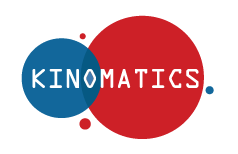NECS – 19-21 June 2014
The Kinomatics team will be presenting at the upcoming NECS (European Network for Cinema and Media Studies) conference in Milan, Italy. For details on the conference and presentation times see the Conference Program. Deb Verhoeven, together with Richard Maltby, will be discussing the challenges and opportunities that big cinema data offers both traditional film studies and the case study approach of New Cinema History. In a second paper we will be presenting our current work on tracking the exhibition of the movie The Hobbit: An Unexpected Journey and the relationship between remittances and film distribution with a focus on Indian films. These two presentation are proudly associated with the HoMER (History of Moviegoing, Exhibition, and Reception) group. We will also be presenting our research on the ‘songification’ of live music events.
ABSTRACT: Big Data and the Case Study: Challenges and Opportunities
Deb Verhoeven (Deakin University), Richard Maltby (Flinders University)
In his review of Explorations in New Cinema History, James Chapman notes that, “The next question for the ‘new cinema history’ must surely be to find qualitative methods that will help us to understand audience tastes”. On the other hand, in Macroanalysis (2013), Matthew Jockers argues that contemporary scholars, “can no longer risk being just a close reader.” Instead, Jockers argues for a combined approach in which traditional textual analysis coexists with aggregated computational evidence. Both Chapman and Jockers are pointing to the emergence of new, hybrid humanities research methodologies made possible by a profusion of cultural data and the ready availability of consumer technologies that enable highly detailed textual analysis. Our paper explores the compatibility of quantitative and qualitative methodologies in the field through examining the parallel challenges and opportunities that big cinema data offers to the “canonical and anecdotal” (Jockers) methods of both traditional film studies and the case study approach of much New Cinema History.
ABSTRACT: The Kinomatics Project: an assessment of using “small” data to support “big” data
Colin Arrowmsith (RMIT University), Alwyn Davidson (Deakin University), Bronwyn Coate (Deakin University), Deb Verhoeven (Deakin University)
Looking at cinema exhibition and distribution at an international scale requires data beyond broad aggregates, it requires data that is specific to individual films and cinema venues in order to appreciate the intricate temporal and geographic aspects of flow and patterns. The Kinomatics Project has tracked the global flow of individual film screenings (down to date and time) for over 54,000 films for 30,000 venues throughout 48 countries internationally. This presentation will highlight the importance of global scale analysis and data through two case studies. The first will track the spatial and temporal relationships of The Hobbit: an unexpected journey, highlighting the complexities of international cinema enterprises and the subtleties of contemporary releasing strategies. The second explores the relationship between remittance flows and the movement of film around the globe with a focus on Bollywood films. This presentation will introduce some methods for analysing and visualising data used in the two case studies.
ABSTRACT: ‘Songification’: Vernacular approaches to music industry research
Deb Verhoeven and Alwyn Davidson (Deakin University)
This paper explores the impact of undertaking creative industry research in formats that make the most sense to the communities and industries being studied. We will present insights drawn from a case study of research into the live music industry. Although project data is available for public feedback online (http://tugg.me) the research outcomes are typically captured as complex graphs or tables and are consequently inaccessible to the communities under study. To redress this, the research team developed a process called ‘songification’ (Verhoeven et al, 2012). Songification is an extension of the method of sonification (Hermann, 2011) which realizes data in the form of auditory values. By further transforming our research data into music we created an improved experience for discerning the relations and rhythms in the data, demonstrating how enhanced auditory data design provides both a medium for aural intuition and an inclusive, ‘vernacular’ opportunity for non-professional research participation.

No comments yet.